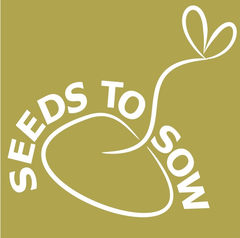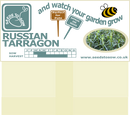Description
Russian Tarragon does not have as strong a flavour as French Tarragon but the plants are much hardier, having vigorous growth even in poor soils.
The aromatic foliage is best used fresh in sauces, vinegars and dressings and goes well with chicken, fish and egg dishes.
| When to sow | March to May |
| Sow seeds indoors 0.5cm (¼ in) deep, in pots or trays of compost and lightly cover the seeds with a sprinkling of compost , and place at a temperature of 15-20°C. | |
| Sow direct outside, once all risk of frost has passed, in shallow seed drills or in pots or containers. | |
| What to do Next | When seedlings are large enough to handle, transplant into 7.5cm (3") pots and harden off the plants for 7 to 10 days. |
| If to be grown outdoors transplant them into their final growing position once the risk of frost has passed, 30cm (12in) apart. | |
| Direct sown seedlings can be thinned to 30cm (12in) or if growing in a pot thin to 2-3 plants per pot. | |
| Whilst the plant is still young keep the compost moist however once established do not overwater. | |
| Harvest | April to October |
| Handy Tips | Regular using and cutting of plants early in the season develops a desirable compact growth habit. |
| In the winter cut plants down to the ground to induce fresh growth. | |
| Companion Planting | Tarragon is said to enhance most vegetables when planted amongst them. |
| Nutritional Information | Leaves are rich in essential Iodine, Vitamins A and C |
| Serving Suggestion | The aromatic foliage is best used fresh in sauces, vinegars and dressings and goes well with chicken, fish and egg dishes. |
Payment & Security
Your payment information is processed securely. We do not store credit card details nor have access to your credit card information.






